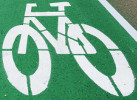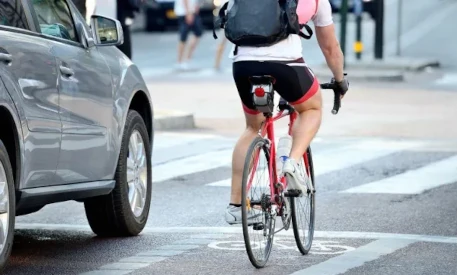 Research by Dr. Ben Beck at Australia's Monash University collected data on 60 cyclists in Melbourne who rode their bicycles with a custom device (the 'MetreBox') installed to quantify the distance that motor vehicle drivers provide when passing them. More than 18,000 vehicle passing events from 422 trips were recorded.
Research by Dr. Ben Beck at Australia's Monash University collected data on 60 cyclists in Melbourne who rode their bicycles with a custom device (the 'MetreBox') installed to quantify the distance that motor vehicle drivers provide when passing them. More than 18,000 vehicle passing events from 422 trips were recorded.

Study Findings
One in every 17 passing events (n=1085) came within one metre of the travelling cyclist and, alarmingly, 124 passing events came within less than 60 cm. In higher speed zones, greater than 60 km/h, roughly one in every three (n=293) passing events was a 'close' pass (<150 cm).
There were approximately 1.7 passing events of less than 100 cm for every 10 km travelled.
The Research Conclusion
Research findings show that on-road bicycle lanes, particularly alongside parked cars, are not the optimal solution for protecting people who ride bikes.
Specifically, passing events that occurred on a road with a bicycle lane and a parked car had an average passing distance that was 40 cm less than a road without a bicycle lane or a parked car. Dr Beck said cycling-related infrastructure needs to come under the microscope.
“Our results demonstrate that a single stripe of white paint does not provide a safe space for people who ride bikes.”
Dr Beck said in order to improve safety and increase cycling participation, it is clear that far greater investment is needed in providing infrastructure that separates cyclists from motor vehicles by a physical barrier.
B.C.'s Rules for Passing Cyclists
B.C.'s Motor Vehicle Act was amended in 2024 to establish minimum passing distances to protect vulnerable road users. These distances are 1 m for roads with a posted speed of 50 km/h or less and 1.5 m for higher speed limits.
Learn More
Share This Article
Although I very much enjoy the Beck family’s purity law Pilsner I have questions about the conclusions arrived at based on the study’s statistical findings. What were Dr. Beck’s feelings about separated bike lanes before the study was conducted? It’s a great leap to conclude that they are the solution to drivers encroaching on a cyclist’s reasonable safety zone. Here’s a few variables that must be considered:
Were these trips made exclusively within a demarked “bicycles only” lane?
Was the lane of uniform width and in good repair?
Did the cyclists maintain their line through the left, center, or right margin of the bike lane (as dictated by BC MVA and most others), or inversely as Australian rules would dictate.
Anecdotaly I would suggest that 95% of motorists leave a margin of one full car width when they pass me while I am on a bicycle, riding as far right as practicable.
In BC we recently had a fatality where a cyclist was fatally struck when swerving left to avoid being “doored” while traveling in this type of lane with parked cars to the right so I am in agreement that these lanes are flawed. The discussion needs to be around what the solution is and I suggest that separated bike lanes are not the panacea that their promoters claim as they have their own drawbacks.
- Log in to post comments
Oddly enough, I came across this gem from Australia.
Managing space margins and timing is everybody's responsibility. One would expect that the most vulnerable would be the most concerned about maintaining space, and tracking every vehicle around them constantly. But that's not what we see on the streets.
- Log in to post comments
- Log in to post comments

Separated bike lanes